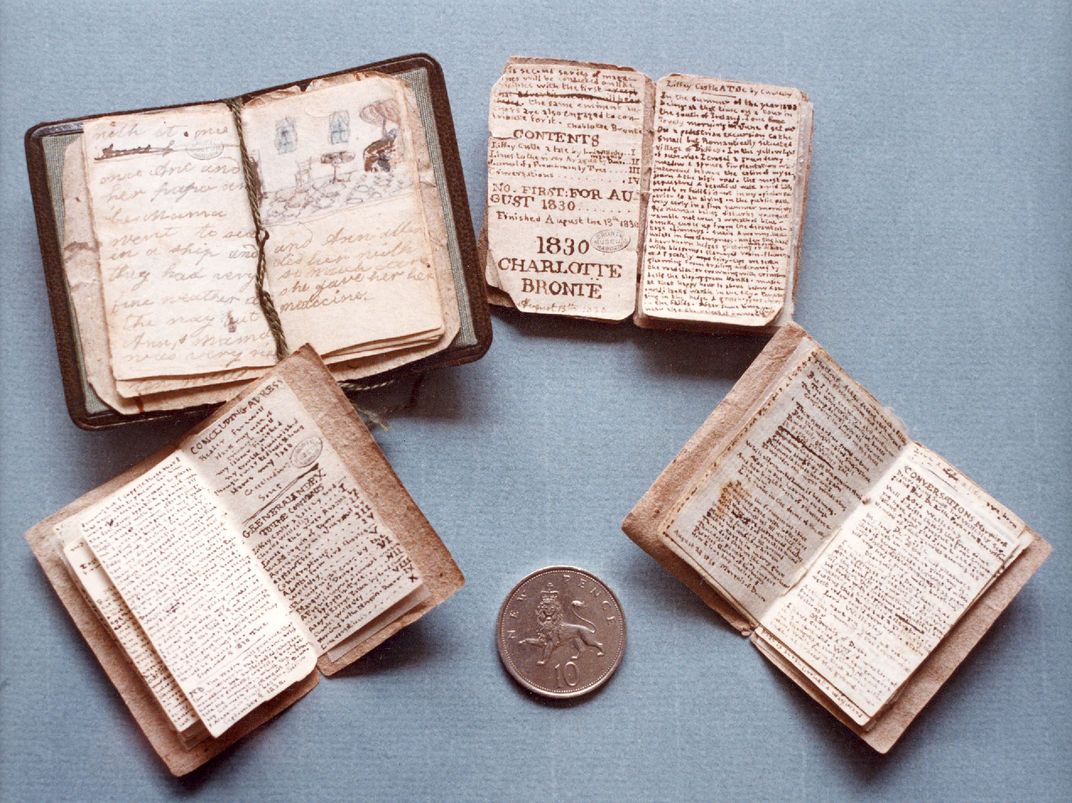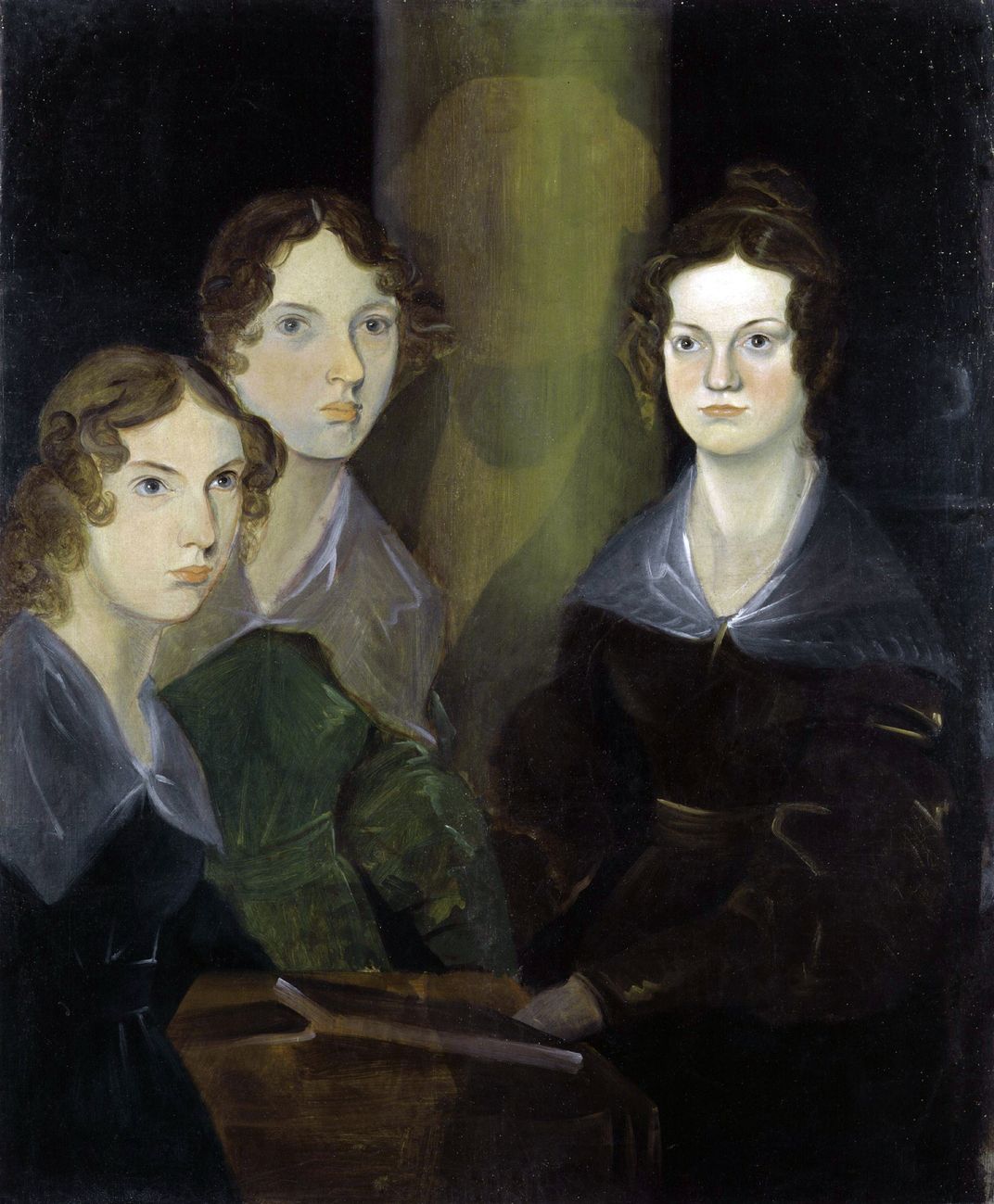Miniature Manuscript Penned by Teenaged Charlotte Brontë Will Return to Author’s Childhood Home
The tiny volume, one of six created for a series, will now join four surviving counterparts on view at the Brontë Parsonage Museum
/https://tf-cmsv2-smithsonianmag-media.s3.amazonaws.com/filer/7d/bd/7dbdf396-c570-4401-883a-892be56038df/autograph-manuscript-signed-charlotte-bronte-second-series-of-the-young-mens-magazines-copyright-aguttes-svv-france-66016-c-1024x683.jpg)
When Charlotte Brontë was 14 years old, she wrote a trio of stories for a tiny handmade book set in the fictional town of Glass Town, West Africa. Titled The Young Men’s Magazine, the matchbook-sized miniature was drafted with a specific audience in mind: namely, an army of toy soldiers owned by the author’s younger brother, Branson.
In total, Brontë and her younger siblings, Branwell, Emily and Anne, produced six editions of their militant-minded magazine. Of these, five are known to survive; one went missing around 1930, according to the Brontë Parsonage Museum, operated by the Brontë Society, which has long owned four of the remaining manuscripts. The West Yorkshire museum—once the Brontë family’s ancestral home—attempted to complete its collection when the final book came up for auction in 2011 but was outbid by a French businessman. Earlier this week, however, the Brontë Parsonage finally secured its long sought-after prize, purchasing the 189-year-old volume for a grand sum of $777,000.
“That this unique manuscript will be back in Haworth is an absolute highlight of my 30 years working at the museum,” Ann Dinsdale, principal curator of the Brontë Parsonage Museum, says in a statement. “Charlotte wrote this minuscule magazine for the toy soldiers she and her siblings played with, and as we walk through the same rooms they did, it seems immensely fitting that it is coming home.”
As Maxwell Williams reports for artnet News, the contents of The Young Men’s Magazine aptly reflect its intended audience. In a tale now viewed by experts as “a clear precursor” to Charlotte’s Jane Eyre—specifically the scene in which Mr. Rochester’s mentally ill wife, Bertha, sets Thornfield Hall alight—a murderer driven mad by the ghosts of his victims ignites an “immense fire” with his mind.

According to a crowdfunding page launched by the museum in late October, the “little book” is dated to August 19, 1830; in addition to boasting three original stories, the stitched pages include a table of contents, advertisements and other features commonly found in magazines. Overall, the portal states, the 35- by 61-millimeter volume contains more than 4,000 handwritten words.
Some 1,000 literary lovers from around the world donated more than £85,000 (just under $110,000 USD) toward the manuscript’s purchase. Per the Guardian’s Alison Flood, the campaign gained traction thanks to backing from public figures including actress Judi Dench and Girl With a Pearl Earring author Tracy Chevalier.
Dench, who serves as honorary president of the Brontë Society, described the miniature books as “a magical doorway into the imaginary worlds [the Brontës] inhabitated.”
She added, “These tiny manuscripts … also hint at their ambition to become published authors. It’s very moving to think of 14-year-old Charlotte creating this particular little book at home in Haworth Parsonage.”

As Flood writes in a separate Guardian article, the volume in question—fifth in the sequence of six numbered editions—transferred to private hands upon Brontë’s death at age 38 in March 1855. (Surprisingly, Charlotte was actually the longest-lived Brontë sister: Emily, best known for writing Wuthering Heights, died at age 30 in December 1848, while Anne, best known for The Tenant of Wildfell Hall, died at age 29 in May 1849.)
Although the book came up for auction in a 2011 Sotheby’s sale, French businessman Gérard Lhéritier outbid the Brontë Society and placed the $1.1 million, 19-page manuscript on view in his Musée des Lettres et Manuscrit. In what the New York Times’ Jennifer Schuessler deems a true “gothic twist,” authorities later shut down the Paris museum after discovering Lhéritier was using the institution as a front for a fraudulent investment scheme.
When The Young Men’s Magazine finally returned to the market, the Brontë Society was quick to act. As the team wrote on its crowdfunding page, “We’re determined this time to succeed in bringing it home—to the Brontë Parsonage Museum in Haworth, where all those years ago, Charlotte carefully folded and stitched the little magazine into its brown paper cover and filled it with over 4000 tiny written words.”
Thanks to the influx of donations, as well as grants from the National Heritage Memorial Fund and other public trusts, the group was able to place a winning bid. Now, the museum says, the miniature manuscript will finally be reunited with its surviving counterparts.
“There is a tremendous sense of achievement,” a statement provided to artnet News reads. “This miniature manuscript will be here in the museum long after we have all gone—we are simply its custodians for now and that alone feels like a historic moment.”
/https://tf-cmsv2-smithsonianmag-media.s3.amazonaws.com/accounts/headshot/mellon.png)
/https://tf-cmsv2-smithsonianmag-media.s3.amazonaws.com/accounts/headshot/mellon.png)